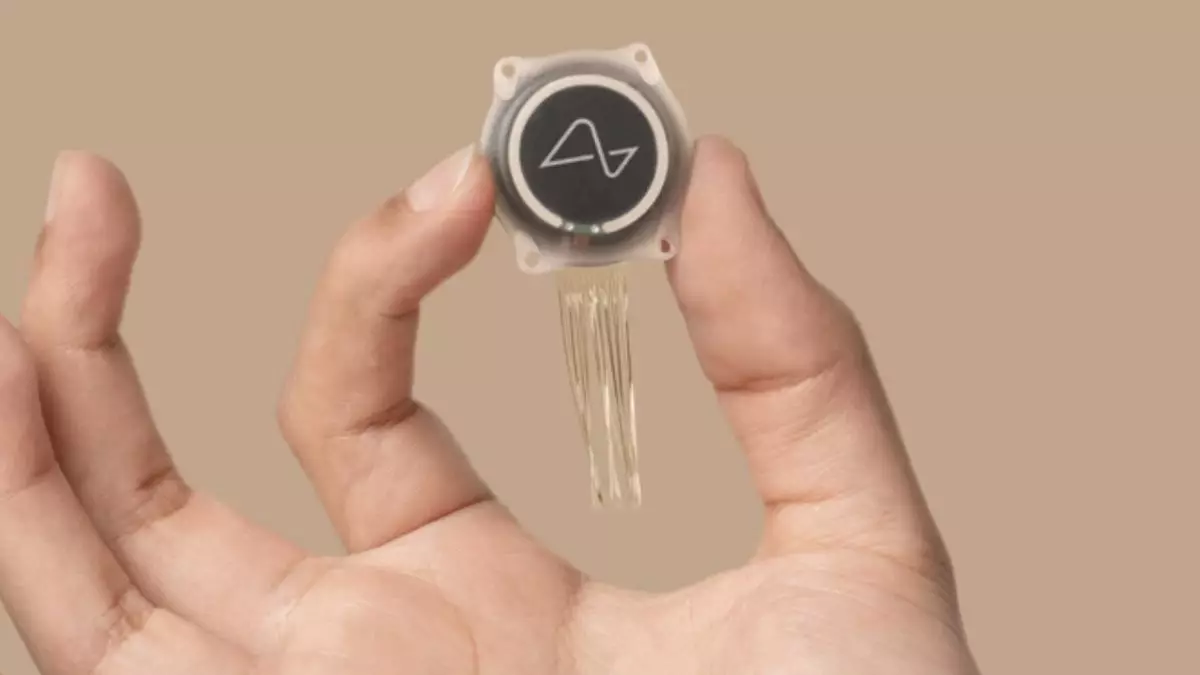In a striking intersection of science fiction and contemporary medical innovation, Elon Musk’s Neuralink has crossed a significant threshold with the announcement of its Blindsight brain implant achieving Breakthrough Device Designation from the FDA. Musk’s choice to reference Geordi La Forge—a character from Star Trek known for his advanced visor that enabled him to see—illustrates not only the cultural resonance of sci-fi advancements but also the ambitious aspirations Musk has for his brain-computer interface technology. However, beneath the glittering surface of this announcement lies a complex web of possibilities and limitations that merit deeper examination.
At its core, Neuralink’s Blindsight is designed to address profound challenges faced by individuals experiencing vision loss. Musk’s assertion that individuals who are blind from birth could see “for the first time” raises both hope and skepticism. The underlying technology involves a microelectrode array strategically placed in the visual cortex, which aims to stimulate neurons in ways that could restore or create visual perception. The potential for groundbreaking applications in restoring sight for such individuals taps into deep-rooted desires for accessibility and normalization in the realm of disabilities.
However, Musk’s optimistic pronouncements must be contextualized within the rigorous standards of medical ethics and cognitive science. The statement that even those who have lost their optic nerve could regain sight presumes a functioning visual cortex, which is crucial but insufficient by itself. It is important to remember that the experience of sight is not merely an input-output function but involves complex interpretations shaped by years of visual stimuli. For someone blind from birth, the path to vision translates not just into the receipt of data but also requires the cognitive wiring to interpret that data meaningfully.
Musk’s analogy likening initial visual experiences to “Atari graphics” provides a glimpse into the formidable challenges ahead for Neuralink’s vision restoration goals. While technological improvements in electrode density raise the hope for clearer images, current limitations in implant technology underpin the harsh reality of the problem at hand. With devices in the past only capable of operating with a limited number of electrodes, substantial advancements must be achieved to reach even a fraction of the resolution of basic digital graphics.
Simply put, even attaining the low-resolution visuals reminiscent of early video game aesthetics poses significant technical hurdles. The comparison to Atari graphics is illustrative but not wholly encouraging; it takes a considerable amount of work to replicate even that rudimentary level of sight. Furthermore, Musk’s comparison to advanced potentialities—such as seeing in infrared, ultraviolet, or radar wavelengths—offers a tantalizing glimpse into the future, yet serves to heighten expectations that might not be immediately realizable.
Perhaps the more complex explanation of restoring sight to individuals blind from birth lies in the unchartered territory of cognitive development and perception. Neuroscience informs us that the brain does not merely interpret stimuli but requires specific experiences to create meaningful connections. For someone who has never had sighted experiences, simply receiving visual data through stimulation may not translate seamlessly into understanding or perceiving the world as sighted individuals do.
Moreover, this situation also highlights a critical sensitivity in communication regarding advancements in technology. Those engaged in the advocacy of the blind and low-vision communities often encounter misconceptions perpetuated by those unaware of the intricacies surrounding visual perception and the cognitive frameworks underpinning it. Musk’s rhetoric, while seemingly benevolent, can inadvertently contribute to misconceptions about the potential for cognitive adaptations to occur post-implantation.
While excitement accompanies advancements like Neuralink’s, it is important to moderate our enthusiasm with a dose of realism. The company’s aspirations echo grand visions characteristic of Musk’s public persona, often laced with a healthy dose of hubris. Throughout his various ventures, from SpaceX to Tesla, Musk has demonstrated that significant technological strides can be made; yet, these advancements often come alongside ethical discussions regarding viability, accessibility, and implications of such innovations.
The journey toward vision restoration via Neuralink’s Blindsight will undoubtedly be arduous, filled with challenges that extend far beyond technological barriers. It intertwines ethical considerations, cognitive understanding, and societal implications that demand thoughtful dialogue. The engagement with such cutting-edge innovations must be balanced with a genuine recognition of their limitations and the intricacies of human cognition. As Neuralink forges ahead, it is essential that we remain both hopeful and grounded in the reality of the journey that lies ahead.

